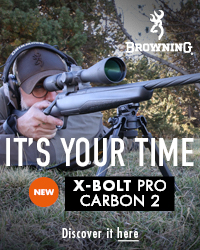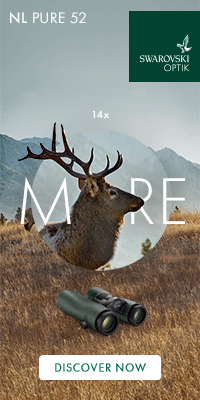The best calibre for UK deer stalking & Management? This is the 'biggy', ‘the grail’ the number one question that obsesses deer managers and those new to deer stalking more than any other, and the question I am asked by far and away the most frequently.

(Above: Can there be one calibre that can truly be described as 'the' top most suitable calibre for the whole of the UK?)
Aware of how feelings can run high on this contentious subject, I have put off putting pen to paper on the matter, however I must stop being so cowardly and finally stake my colours to the mast.
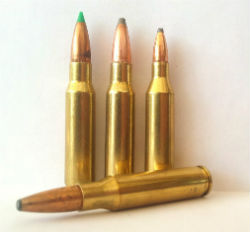 So what are the options, well firstly let’s start by immediately narrowing the field. There is simply no point in purchasing a little known calibre. If you are going to buy just one rifle in one calibre, it is important that you have the confidence to be able to go into any gun shop, safe in the knowledge that they will pretty much be guaranteed to have a few rounds of your chosen calibre.
So what are the options, well firstly let’s start by immediately narrowing the field. There is simply no point in purchasing a little known calibre. If you are going to buy just one rifle in one calibre, it is important that you have the confidence to be able to go into any gun shop, safe in the knowledge that they will pretty much be guaranteed to have a few rounds of your chosen calibre.
Purchasing your ammunition in your chosen brand and bullet weight can be hard enough these days, without having to search the length and breadth of the UK to find a rare or unusual calibre.
If your FAC allows you to purchase in bulk this is less of a problem. When you do find a batch of your desired bullet/cartridge combination, then you can buy the whole lot and be able to shoot care free for many months, or even years without having to resume your search.
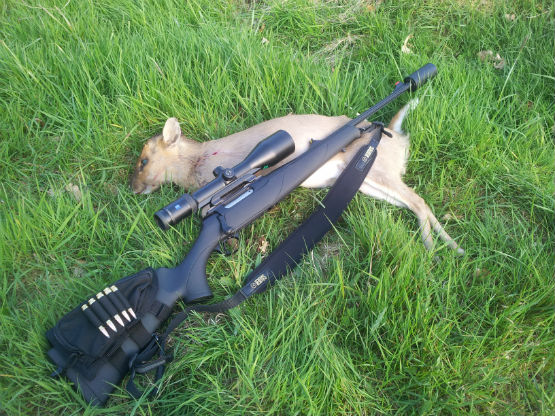
(Above: The Top Calibre must be suitable for all Species of Deer including a diminutive Muntjac Doe)
This however is not the case for most deer stalkers, especially those new to deer management, who will, more than likely, have been restricted by their FEO (Firearms Enquiries Officer) to a limited number of rounds. It is important therefore to opt for a calibre that you know you can purchase without carrying out a 200 mile round trip in order to do so.
(Click on any calibre highlighted bold to read more)
For this reason I am going to immediately narrow the field to the following: 243-winchester, 6mm BR, 6.5x55 Swedish, 270-winchester, .308 Winchester & the .30-06 Springfield. If your favourite calibre is not amongst this list then I apologise, however the very fact that I have not thought to include it in my short list means that the chances are your local gun shop has done likewise, and has also failed to order in your much loved calibre. Notable Rifle calibres such as the 7x57mm Mauser, also known as the .275 Rigby, and the 6.5 Creedmoor are undoubtedly superb and highly suitable for the UK, however purchasing ammunition is a pain so; 'Nuff said'.
Ok so the next criteria must be, is your chosen calibre not only up to the job but also suitable? As we all know there are six species of deer in the UK, ranging from the smallest, say a yearling Muntjac Doe, weighing maybe 20lbs on the hoof, to a mature Red Stag which might weigh as much as 400lbs.
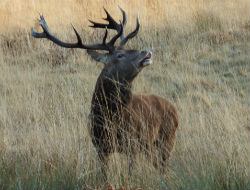 (Above/Left: The Calibre must also be adequate for large lowland Red Deer)
(Above/Left: The Calibre must also be adequate for large lowland Red Deer)
Clearly anyone can see that if you are regularly going to shoot such wildly different species, then ideally you need more than one calibre, that however is to evade a difficult question. We are talking here about the person who wants just one calibre to cover all circumstances.
This calibre should have sufficient terminal ballistics for the larger species, but on the other hand you don’t want to blow the smaller species apart. Some might say; ‘there is no such thing as over kill’, remind yourself of that when your butcher starts declining your carcasses as next to worthless.
For this reason I am going to suggest that if you want just one calibre for all/any deer species, you should shy away from the the 30-06, which is arguably the most powerful of the short list, and also from the 6mm and .243 which are the least. All are truly great iconic calibres, but I have a task to do here and so I have to be ruthless in coming to my conclusions.

(Above: Accurate enough for extended, longer range shots when Deer Stalking in Scotland)
The 6mm and the .243 are highly accurate calibre's that have minimal recoil and muzzle blast, and are extremely pleasant to shoot, however if you turn up with one of these on a highland estate at the peak of the red rut then expect the professional deer stalker to wince slightly when you tell him of your chosen calibre.
Likewise if you are hunting Muntjac with a 'thirty ought six' then be prepared to pay for your shot animals and take them away with you. It's the only polite thing to do because your PH (Professional Hunter) will be getting 'b*gger all for the venison.
So where are we? If I am not mistaken that leaves the 6-5x55 Swedish the .270 Winchester and the 308-winchester.
Topograhy, what a great word! Basically meaning the terrain or landscape. We need to consider over what distances we are shooting and over what type of ground? Much of England & Wales involves woodland stalking, during which an outings stalking will involve shots at around 100 yards, or at any rate shots well within 200 yards.
In these circumstances trajectory, or bullet drop, is less important. With a hundred yard zero all three of these calibres will drop less than 5 inches at 200 yards. The .270 is the flattest shooting with a drop of around 3 inches using 130 grain bullets. The .308 is next best with 3.9 inches using a typical 150 grain bullet, and the 6.5x55 is around 4.6 inches with 130 grains. With a realistic 6 inch kill area on a deer, (when you place a heart/lung shot) all of these calibres are perfectly adequate in terms of trajectory. What happens however when you take your stalking out on the Hill in Scotland?

(Above: Woodland Stalking in the UK does not require long distance shots. Here perhaps the 6.5x55 calibre is perfect)
Here I am afraid the 6.5x55 will start to let you down. Ok so it's flat enough for woodland stalking. Indeed if we were just talking about woodland stalking, the pure ‘shootability’, mild report and moderate recoil of this calibre would have me reaching for it possibly more than any other. In fact it may even find its way to the top contender for the coveted prize of Best Calibre for UK Deer Stalking. However on the hill the drop beyond 200 yards is just too severe. Over open ranges and undulating terrain, it is sometimes difficult to judge distance, and so in these conditions you would be well advised to take a flatter shooting calibre. A big sorry to the superb Sweed, but by virtue of bullet drop it’s out.
So here we are the .270 Winchester and the .308 Winchester. Possibly two of the most popular calibres ever introduced for medium sized game. The .270 as far back as 1923, a necked down version of the .30-06 and the .308 introduced in 1952 and parent of the .243. Both truly superb calibres that have earnt their place in countless gun cabinets.
So what is there between them? Both are hard hitting accurate calibres. Whilst the .270 is slightly flatter shooting, the .308 is highly accurate and more pleasant to shoot. So which is it? Well for me it has to be the .308.
The .308 Winchester has proven itself as one of the most accurate and predictable calibres ever produced. Easy to shoot, with relatively low recoil and moderate muzzle blast, it will be welcome both in Scotland on the hill and amongst woodland stalkers. Not perhaps perfect for every species. It's a big calibre for Muntjac and perhaps possesses a little too much of a curved trajectory to hunt Chinese Water deer ‘couching’ out in large open fields, however no matter what the terrain, or the species, no one will ever turn their nose up at you, instead ask their opinion and even those in possession of other calibres will have to admit it is an all time great.
Added to this any self respecting gun shop will have plenty of ammunition in this calibre in a variety of loads and brands.
Sorry .270. You are also a world leader for medium sized game. It is not so much that there is anything wrong with the .270, but instead simply that I consider the .308 to be marginally better. The .308 Winchester has proven itself by virtue of numerous target competitions to be the more accurate round, and is able to deliver this accuracy along with considerable energy, with a minimum of muzzle report and recoil.
 Ladies and Gentlemen, I give you the .308 Winchester! Winner of the 'County Deer Stalking' Best Calibre award for UK Deer Stalking!
Ladies and Gentlemen, I give you the .308 Winchester! Winner of the 'County Deer Stalking' Best Calibre award for UK Deer Stalking!
(Left: Peter Jones)
Peter Jones is lead instructor at CDS and Chairman of the Capreolus Club, he is a highly experienced, professional deer stalker and large game hunter and has been shooting and hunting big game throughout the UK, Europe and Africa for the last 25 years. Peter holds PDS1 & PDS2 and DSC1 & DSC2 and is an Approved Witness for the British Deer Society in Deer Management Qualifications. In addition to many years of providing expert tuition and guidance to clients, Peter has also been responsible for delivering training and weapon familiarisation programs to Zoos and Wildlife Parks throughout the UK.
For more detailed information about each of the calibres mentioned here and others, take a look at our 'Rifle Calibres' page: rifle-calibres where you will also be able to watch a short film in which Peter Jones discusses rifle calibres with Freddie Nesbitt from William Evans.
Alternatively if you would like advice on how to go about applying for a Firearm Certificate then simply follow this link to find out more: how-to-apply-for-a-firearm-certificate-
Finally if you would like to read about the choice made by other stalkers, then follow this link to: what-is-your-favourite-calibre and why not let us know your choice by emailing



